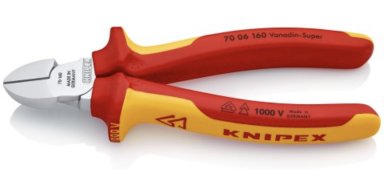Hi,
I'm just ordering the last few things I need to finish my project and I was wondering if there is any other reason to install a solar disconnect except for the practicality of it? I'm hesitant to spend any extra money because I already spent more then I planned. Is there any actual difference between just unscrewing the solar input cables from the SCC and switching off a breaker between the SCC and PV?
I couldn't find any definite answer to this question. I was thinking that maybe if you just unscrew them, you need to also cover the panels with some sheet or something. If you have a breaker, it's probably not necessary. But I just need this clarified.
I might be willing to spend a 15-30 € just for the practicality, but the problem is I will have the cables pre-made for my custom measurements. And I see there might be a problem if I need the guy to make too many connections and cuts. It's hard to calculate upfront how much cm exactly do I need and if there are too many connection, more things might be a little bit off in length and it might become an issue.
Thanks
Jan
I'm just ordering the last few things I need to finish my project and I was wondering if there is any other reason to install a solar disconnect except for the practicality of it? I'm hesitant to spend any extra money because I already spent more then I planned. Is there any actual difference between just unscrewing the solar input cables from the SCC and switching off a breaker between the SCC and PV?
I couldn't find any definite answer to this question. I was thinking that maybe if you just unscrew them, you need to also cover the panels with some sheet or something. If you have a breaker, it's probably not necessary. But I just need this clarified.
I might be willing to spend a 15-30 € just for the practicality, but the problem is I will have the cables pre-made for my custom measurements. And I see there might be a problem if I need the guy to make too many connections and cuts. It's hard to calculate upfront how much cm exactly do I need and if there are too many connection, more things might be a little bit off in length and it might become an issue.
Thanks
Jan




